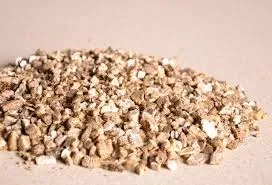Sep . 06, 2024 22:58 Back to list
High Quality Cast Iron Powder - Superior Material for Precision Applications
The Benefits of High-Quality Cast Iron Powder
Cast iron has been a cornerstone material in various industries for centuries, known for its durability, strength, and versatility. Among the many forms of cast iron, high-quality cast iron powder has emerged as a significant material, particularly in powder metallurgy and advanced manufacturing processes. This article explores the numerous advantages of high-quality cast iron powder, its applications, and the factors that contribute to its quality.
Composition and Production
High-quality cast iron powder is typically produced through atomization or grinding methods, which ensure a uniform particle size and shape. The powder primarily consists of iron, with specific compositions of carbon, silicon, and other alloying elements, which provide distinct mechanical properties. The production process plays a crucial role in determining the quality of the final powder, as impurities and inconsistencies can significantly affect performance.
Superior Properties
One of the standout features of high-quality cast iron powder is its excellent mechanical properties. Cast iron powders exhibit remarkable hardness and wear resistance, making them ideal for applications that require high durability. Additionally, the powder possesses good fluidity, allowing for efficient packing in molds and better sintering outcomes. The ability to be shaped and formed into complex geometries further enhances its appeal in various manufacturing processes.
Applications
high quality cast iron powder

High-quality cast iron powder finds applications across a broad spectrum of industries. In the automotive sector, it is commonly used to manufacture components such as engine blocks and gear systems due to its ability to withstand high temperatures and stresses. The construction industry also benefits from cast iron powder, where it is used in the production of building materials and castings that demand superior structural integrity.
Another notable application is in the production of porous materials, which are increasingly gaining traction in filters and separators. The unique properties of cast iron powder allow for the creation of materials that can effectively filter out impurities while maintaining structural stability.
Environmental and Economic Benefits
Using high-quality cast iron powder also offers significant environmental and economic advantages. As it can be manufactured from recycled scrap metal, the production of cast iron powder supports sustainable practices by reducing waste and minimizing resource extraction. Additionally, components manufactured from powder metallurgy processes often result in less material waste compared to traditional methods, further enhancing their eco-friendliness.
From an economic perspective, the efficient production processes and potential for reduced machining costs make high-quality cast iron powder an attractive option for manufacturers. The ability to create complex shapes with minimal finishing requirements translates into lower production costs and shorter lead times, providing a competitive advantage in the market.
Conclusion
In summary, high-quality cast iron powder is a versatile and essential material in modern manufacturing. Its superior mechanical properties, wide range of applications, and environmental benefits make it a favorable choice for industries seeking durability and efficiency. As technology continues to advance, the potential for high-quality cast iron powder will expand, paving the way for innovative solutions and enhanced product performance.
-
Eco-Friendly Granule Covering Agent | Dust & Caking Control
NewsAug.06,2025
-
Fe-C Composite Pellets for BOF: High-Efficiency & Cost-Saving
NewsAug.05,2025
-
Premium Tundish Covering Agents Exporters | High Purity
NewsAug.04,2025
-
Fe-C Composite Pellets for BOF | Efficient & Economical
NewsAug.03,2025
-
Top Tundish Covering Agent Exporters | Premium Quality Solutions
NewsAug.02,2025
-
First Bauxite Exporters | AI-Optimized Supply
NewsAug.01,2025
